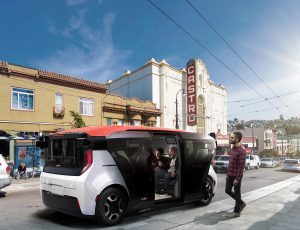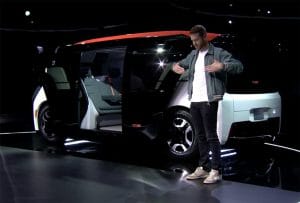Fully driverless, without even a steering wheel and pedals for backup, the battery-powered Cruise Origin might look like it rolled off the set of a science fiction film but it is all but ready to go into production, officials with the San Francisco-based autonomous vehicle start-up announced on Thursday evening.
From the ground up, Origin has little in common with a conventional automobile, eliminating the trunk and engine compartment to give space back to passengers in the form of a tall and roomy cabin for six. It features a clean electric drive system and, company officials said, they expect it will cost a typical San Francisco resident about $5,000 less a year to ride in a Cruise Origin than to own and operate a traditional vehicle.
When Cruise originally started working up plans for a driverless ride-sharing service, it focused on modifying GM’s familiar Chevrolet Bolt EV. Instead, it decided to come up with something “completely different. It’s what you’d build if we didn’t have cars,” said Cruise CEO Dan Ammann. “We (even) thought about redesigning the wheels but decided we didn’t have any great ideas about that.”
(Cruise expected to unveil fully driverless vehicle on Tuesday)
Origin measures about 20 inches longer than the Bolt EV. It stands substantially taller and is virtually a box on wheels, allowing passengers to almost stand upright when entering. Instead of swinging out, the doors extend slightly out of the body and then slide to either side, creating an opening even wider than on a typical bus.
The vehicle will use electric drive components that will show up in the next generation of battery-electric cars GM plans to launch between now and 2023. Like those vehicles, Origin’s batteries, motors and other drive components are under the floor. But it completely eliminates the traditional engine compartment and trunk and, with no driver’s seat or controls, that creates a passenger compartment for up to six with even more legroom than a business-class jet seat.
The driverless vehicle will rely on two primary sensor units using laser, radar and other technologies to watch out for vehicles, pedestrians, bicyclists and other potential obstacles. That creates “super-human” capabilities, claimed Kyle Vogt, who co-founded what was then called Cruise Automation in 2013.
“Why should an AV (autonomous vehicle) stop at a human level of performance?” he asked a packed audience. “It shouldn’t. As humans, we sometimes make mistakes and get distracted.”
Conventional wisdom suggests that autonomous vehicles will be extremely expensive, even though the cost of key technologies, such as LIDAR, a 3D laser system, have dropped substantially. But Cruise officials are confident they can make even bigger breakthroughs, especially after going into mass production.
“At scale,” said Ammann, who previously served as GM president, “we expect to produce it for roughly half what a conventional SUV costs today.”
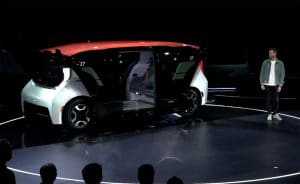
The Cruise Origin has no steering wheel or pedals, room for six and will call San Francisco its home to start.
Further driving down costs, each Origin is expected to be put to almost continuous use and then clock about 1 million miles before heading to the junkyard, or six times more than the typical car today. Using the planned Cruise ride-sharing service rather than owning a private vehicle should save the typical motorist in San Francisco – where the operation will debut – about $5,000 annually, Ammann predicted.
(GM, Cruise put San Fran robot-taxi trial on hold)
“They want to make this more cost effective and safer than owning and driving your own vehicle,” said Sam Abuelsamid, Navigant Research analyst.
The Cruise announcement was relatively short on specifics, including the precise timing of the vehicle’s production launch, as well as where it will be built. Abuelsamid and other observers told TheDetroitBureau.com they are expecting GM to use either the Orion Assembly Plant building the automaker’s Chevrolet Bolt EV, or the nearby Detroit-Hamtramck Assembly Plant, which is undergoing an $800 million makeover for electric vehicle production.
While the spotlight was on the passenger version of Origin, several different variants eventually will be produced, including one for driverless delivery services, Ammann revealed.
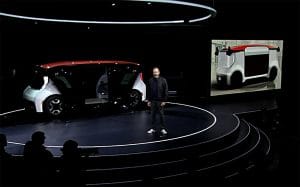
Cruise Chief Dan Ammann says the new Origin could help San Francisco residents cut $5,000 a year from their transportation budget.
GM isn’t the only automaker looking at ways to radically reshape the automobile to take advantage of electric and autonomous technology. Toyota, for one, has already shown a fully driverless concept called e-Pallette that is similar in basic design to the Cruise Origin.
Both vehicles face some challenges before they can get into real-world use, however. Cruise officials, for one, acknowledged they are still working out the final bugs in the Origin’s autonomous technology. Then there is the legal side.
GM applied to the National Highway Traffic Safety Administration, or NHTSA, in 2018, for a waiver allowing the operation of a vehicle without driver controls. NHTSA did not immediately respond, however, and GM Chief Executive Mary Barra met with government officials late last year to push them to move on the request.
Eventually, there could be a number of manufacturers producing fully driverless vehicles for ride-sharing services. In the meantime, more and more prototype vehicles are going into testing on public roads. Google spinoff Waymo launched a ride-sharing venture with Lyft in the Phoenix area in 2018 but it is using modified versions of conventional vehicles, such as the Chrysler Pacifica Hybrid minivan, and those require human backup “operators” in the event of an emergency.
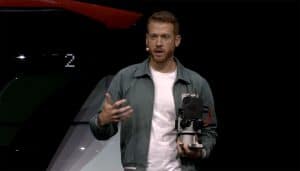
Cruise CTO Vogt says that the cost savings to users could increase as it becomes less expensive to produce the Origin.
The Cruise Origin may be driverless, but there will remain limits to what its “Level 4” technology can handle. The vehicles will be “geo-fenced,” limited to operating in specifically mapped areas and in relatively good weather. The industry’s eventual goal is “Level 5” autonomy, vehicles able to operate anywhere, even off-road. But few expect that to come to fruition until late in the decade — at the earliest.
(GM’s Cruise Unit Gets Additional $1.15B in New Funding)
Founded in 2013 as Cruise Automation, the company has raised $7.25 billion to fund autonomous vehicle development, with GM, Honda, Japan’s SoftBank Vision Fund and T. Rowe Price Associates among its primary investors. Ammann was named its chief executive in November 2018.

